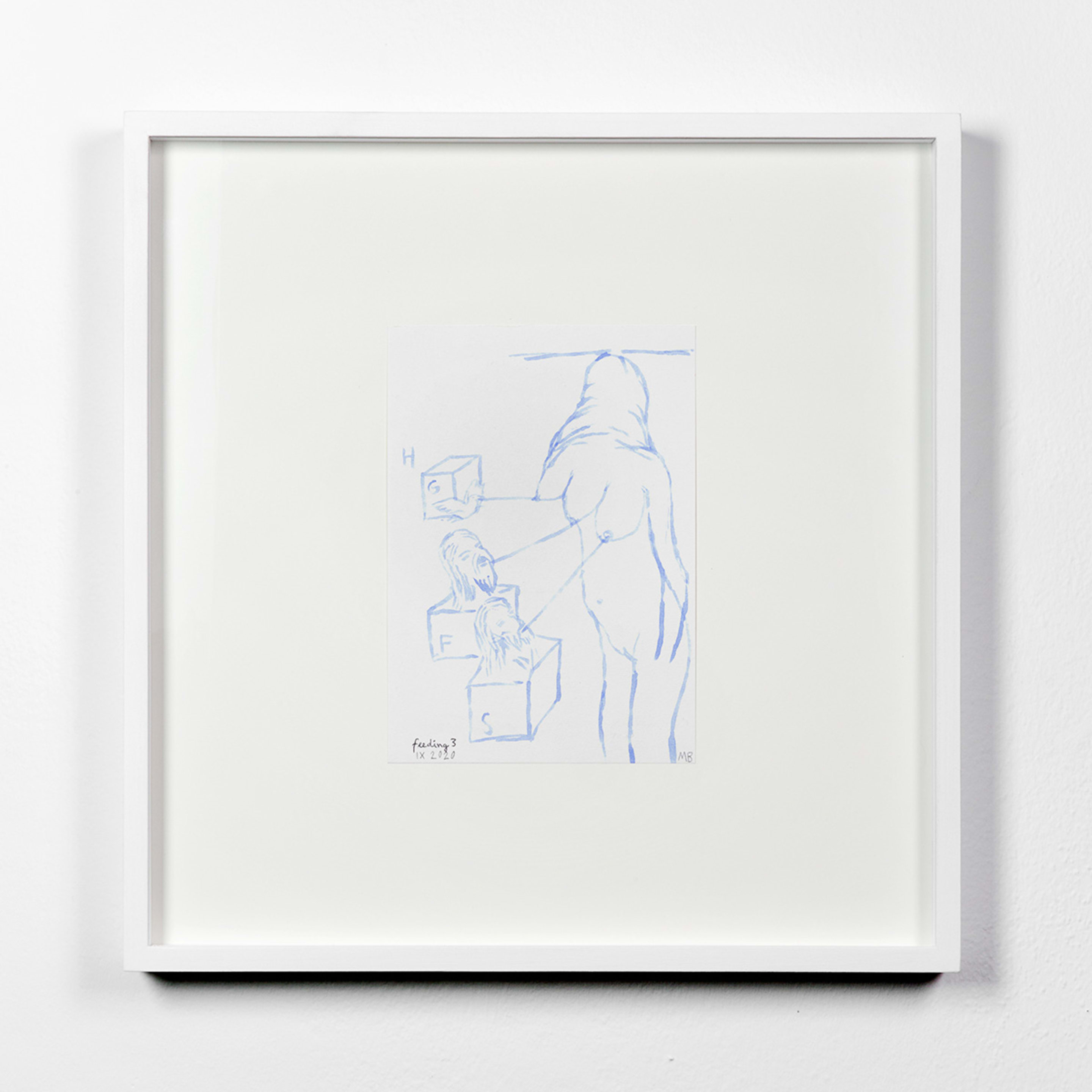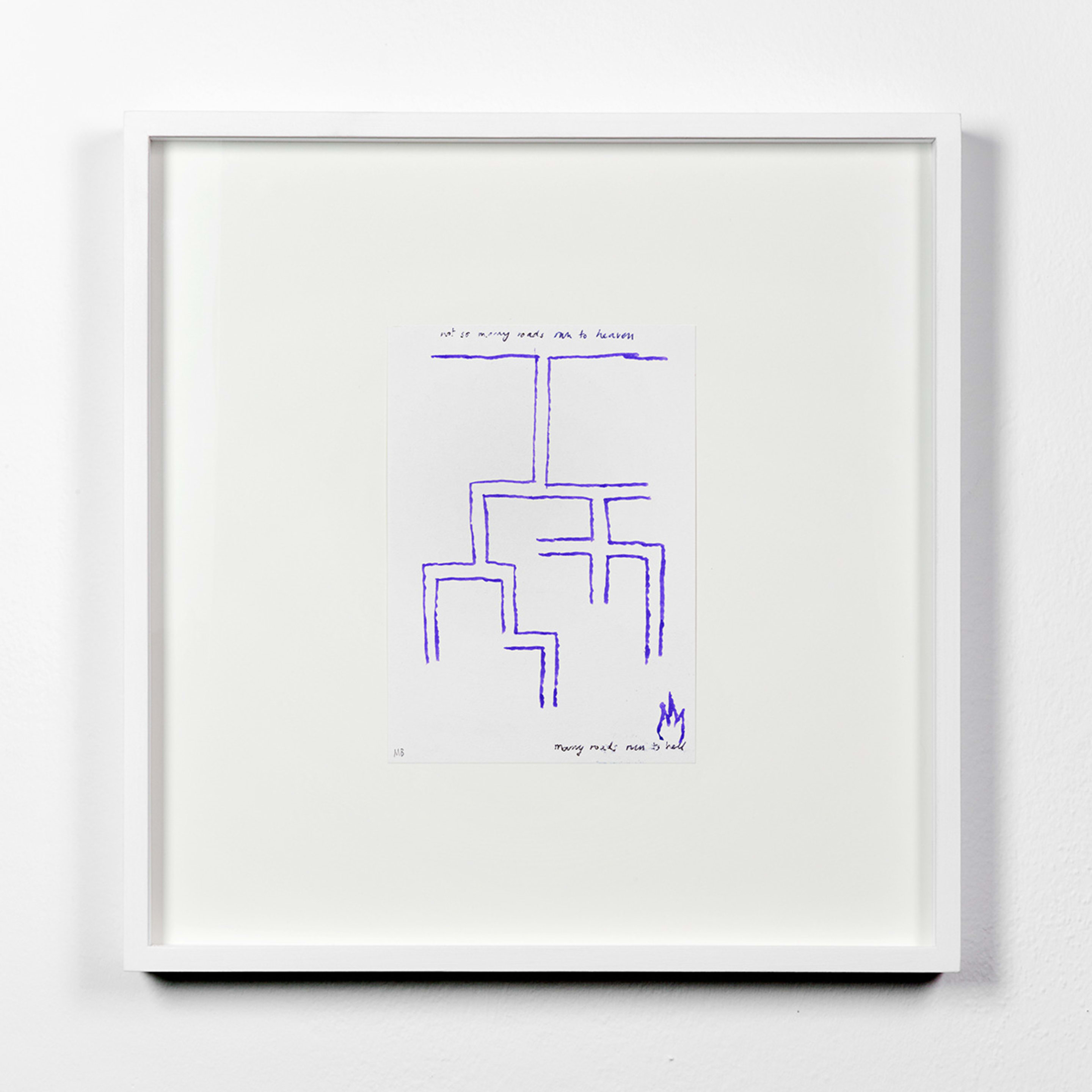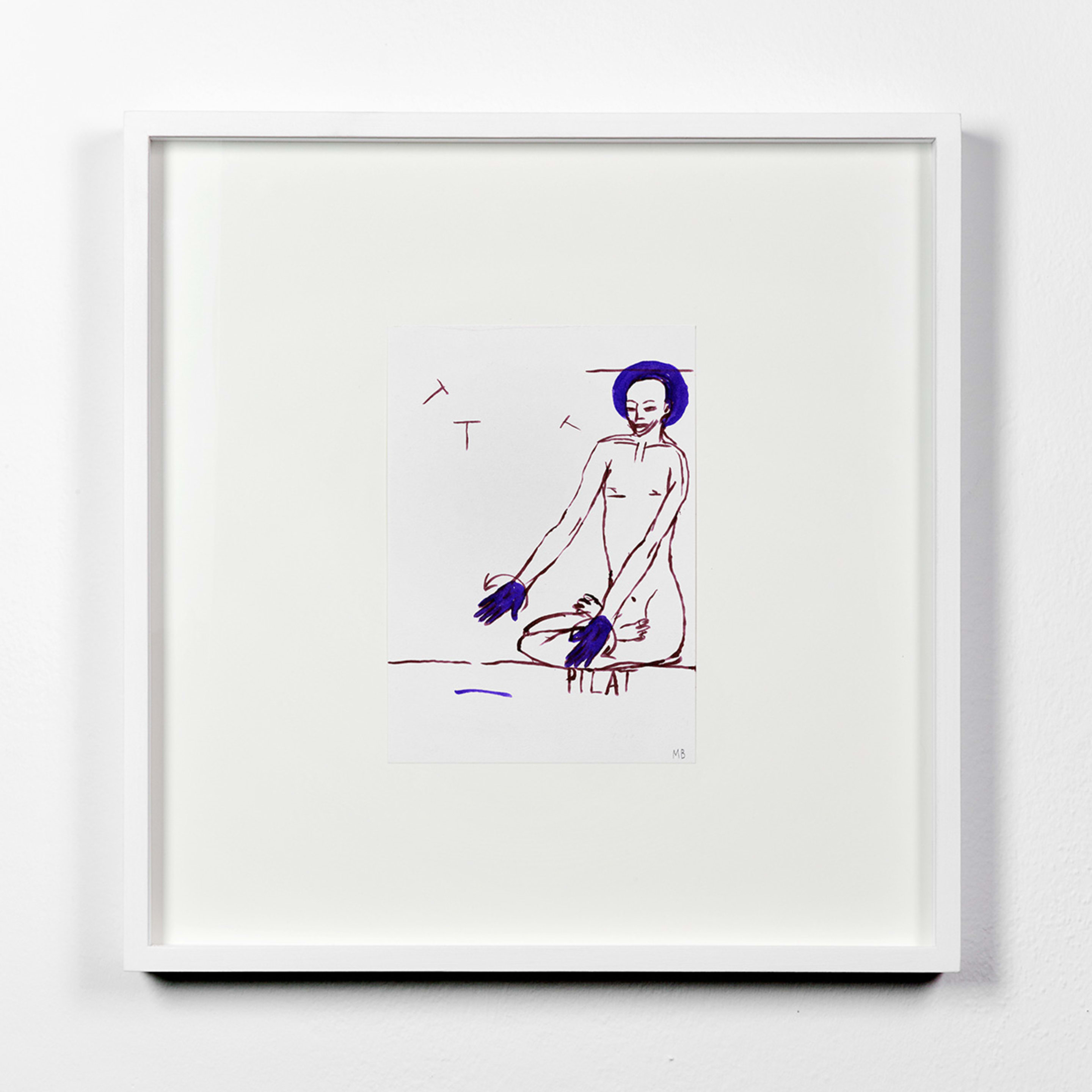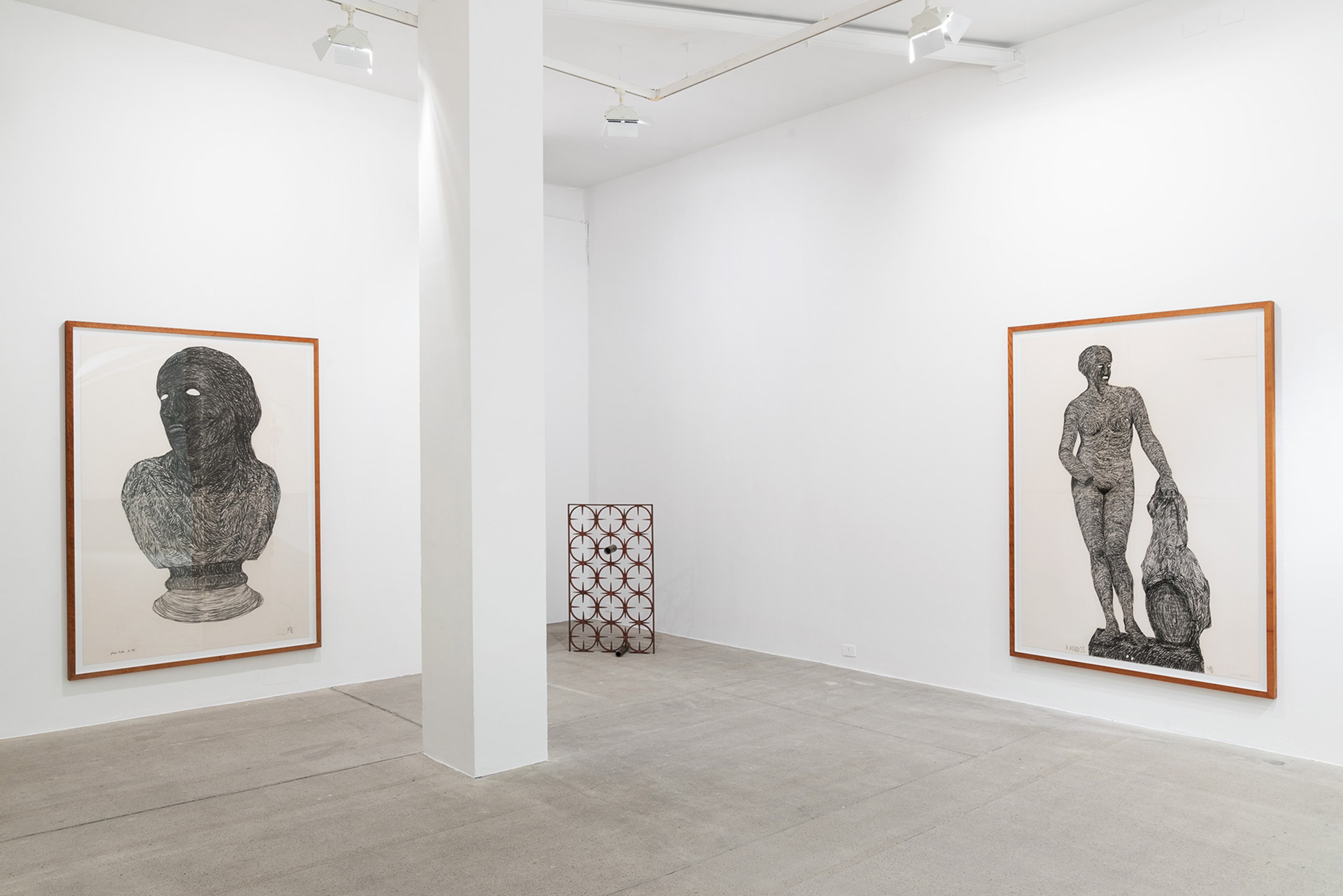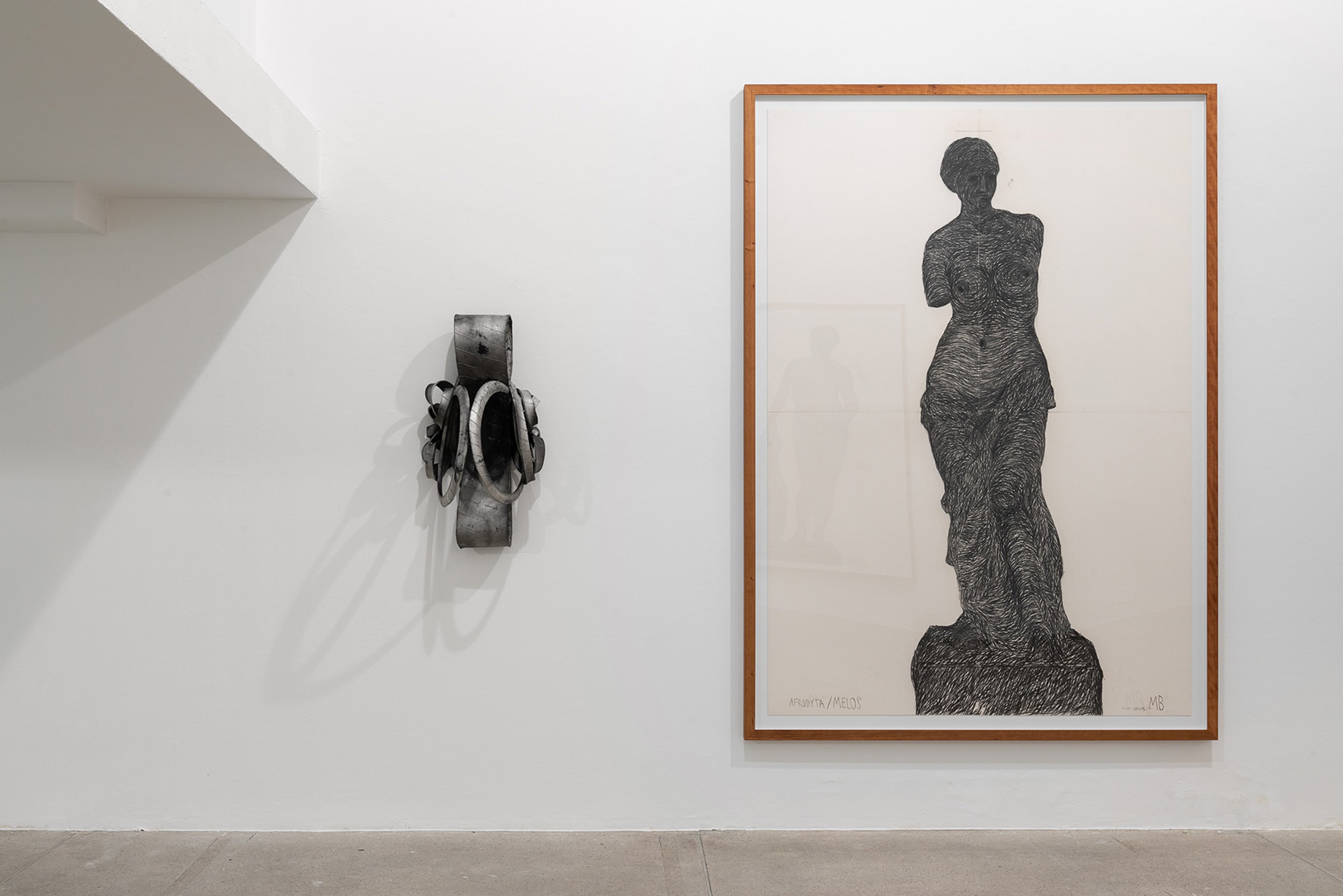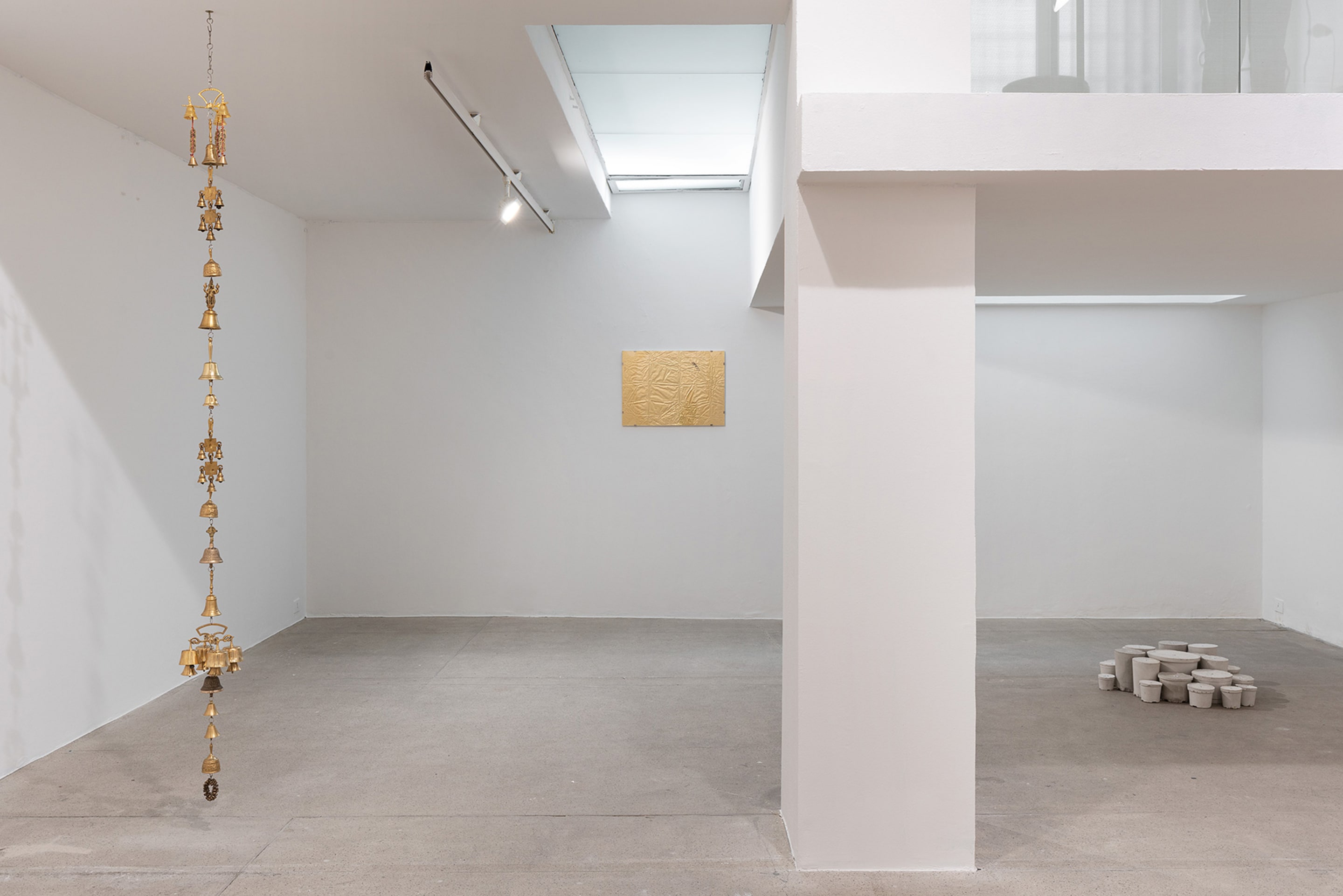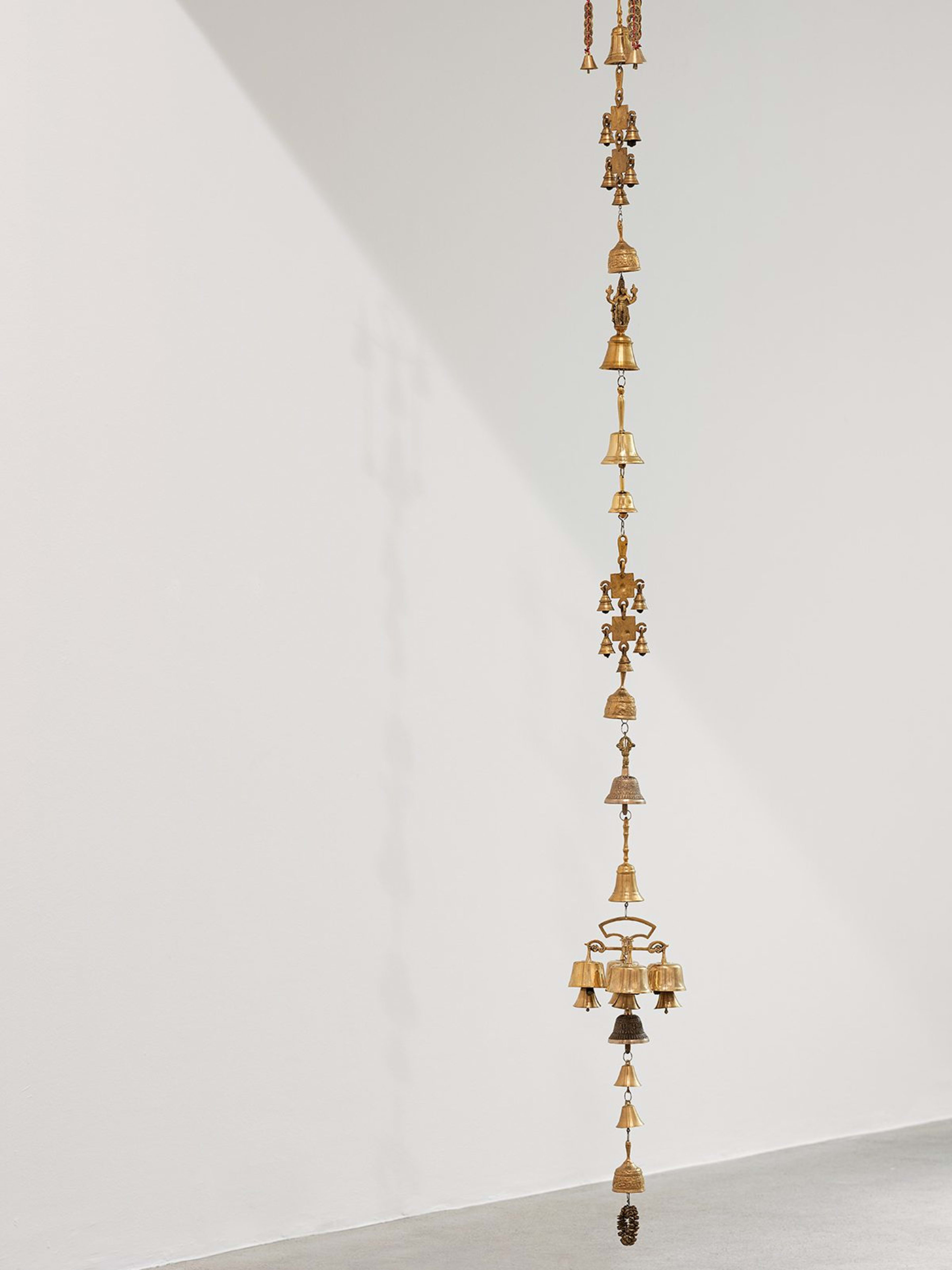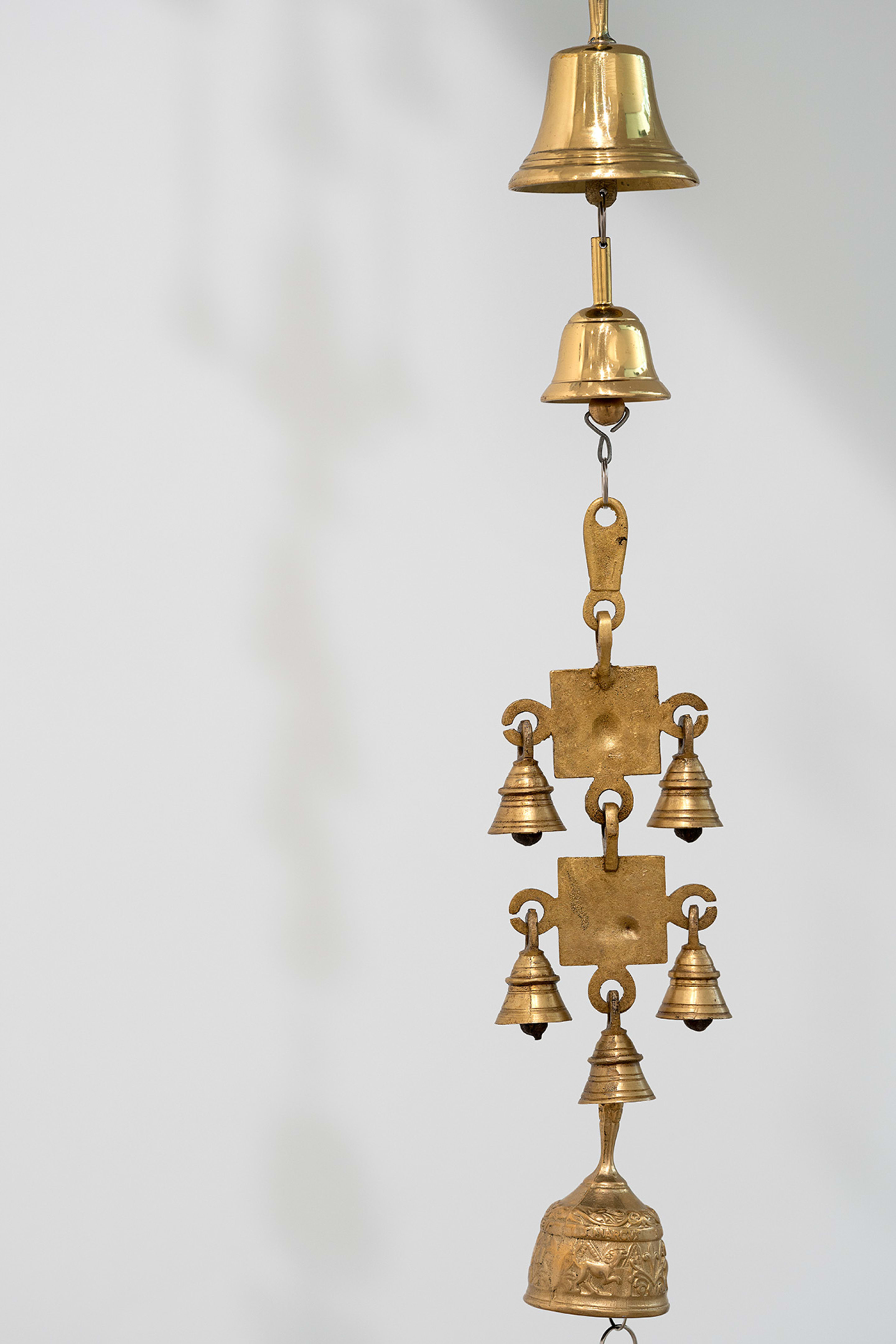Miroslaw Balka – nehtyM
On the occasion of nehtyM, Miroslaw Balka’s fifth solo show with Galleria Raffaella Cortese, we are delighted to present a viewing room dedicated to the artist's exhibition and recent works from his practice at large, which comprises installation, sculpture, video, and drawing.
In occasione di nehtyM, la quinta personale di Miroslaw Balka alla Galleria Raffaella Cortese, siamo lieti di presentare una viewing room dedicata ai lavori in mostra e lavori recenti che testimoniano la sfaccettata ricerca dell’artista che vede come media, installazione, scultura, video e disegno.
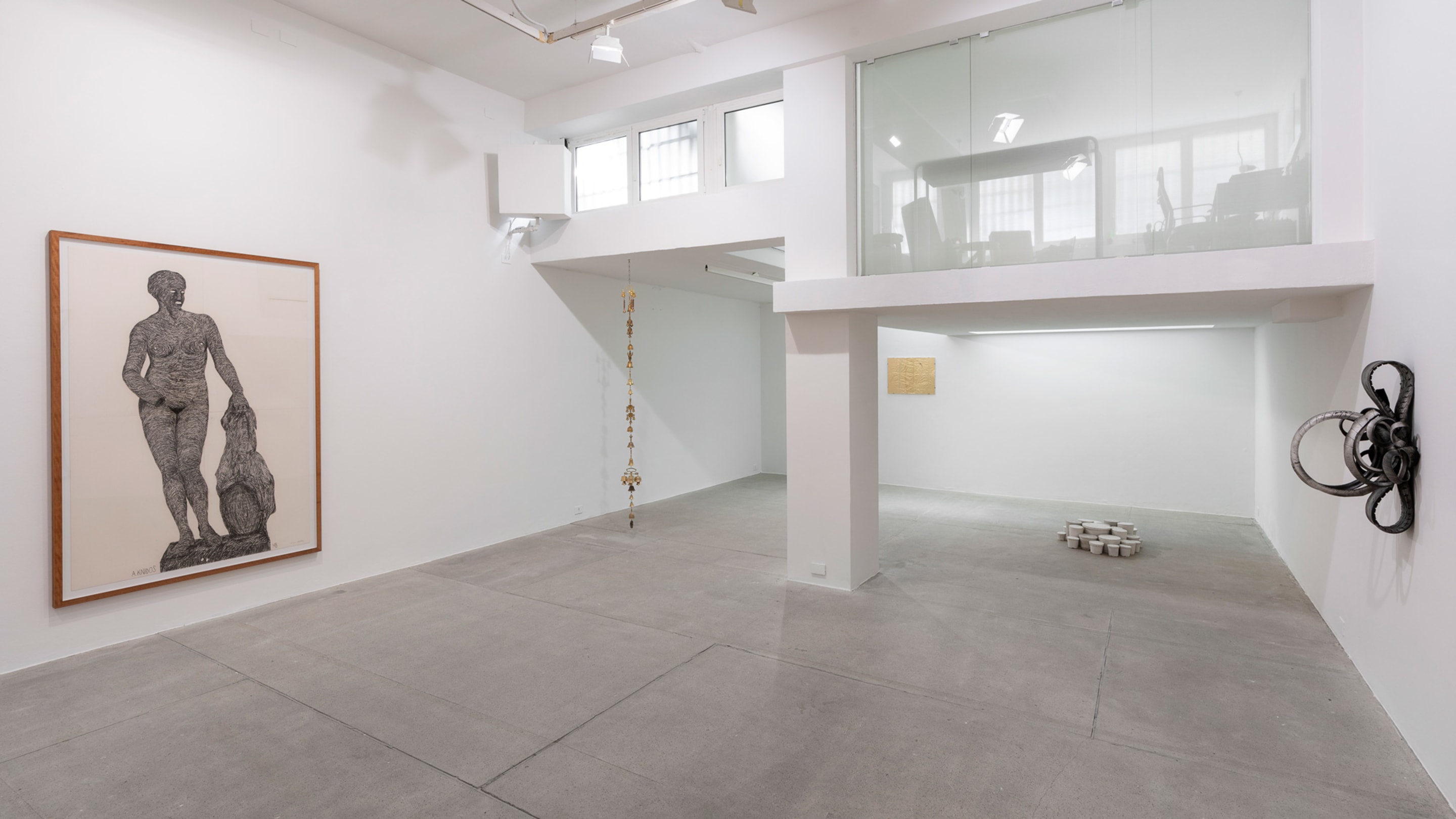
Photo: Lorenzo Palmieri
Introduced by the word-play of the title nehtyM, mirrored version of the German word “Mythen” (in English, Myth), which underlines the artist’s voyage into the mythical concept, the exhibition showcases new bodies of work, drawings and sculptures, across the three macro-areas of Desire, Gravity and Togetherness. The journey continues Balka’s research within the delicate relationship between art and life, ever present in Balka’s work since the 80s, interweaving personal experiences with images from collective memory.
nehtyM, titolo della mostra, è la versione speculare della parola tedesca “Mythen” che rivela il viaggio dell’artista nel concetto di mito attraverso tre simbolici momenti: Desiderio, Gravità e Unione. Il percorso espositivo è così scandito in tre macro-aree attraverso nuove sculture e disegni, opere che proseguono l’indagine, avviata da Miroslaw Balka negli anni ’80, sul delicato rapporto tra arte e vita, intrecciando le esperienze personali con l’immaginario della memoria collettiva.
While diving into the exhibition, the viewer approaches the first area of Desire, featured by three large drawings that represent Aphrodite, the ancient Greek goddess of love and beauty and Niobe, Tantalus’ daughter who was punished for her hubris in maternal pride for her many children. These figures became the first subject of desire during Miroslaw’s childhood, when he was looking at black and white mythology books at the age of twelve.
Desiderio è il primo tempo della mostra, caratterizzato da tre disegni di grandi dimensioni che rappresentano due personaggi della mitologia greca: Afrodite, l’antica dea greca dell’amore e della bellezza, e Niobe, figlia di Tantalo, che fu punita per l’arroganza con cui si vantava dei propri numerosi figli. Le due divinità appartengono alla storia personale dell’artista che le ricorda come i primi soggetti del desiderio, scoperti mentre curiosava tra i libri di mitologia in bianco e nero all’età di 12 anni.
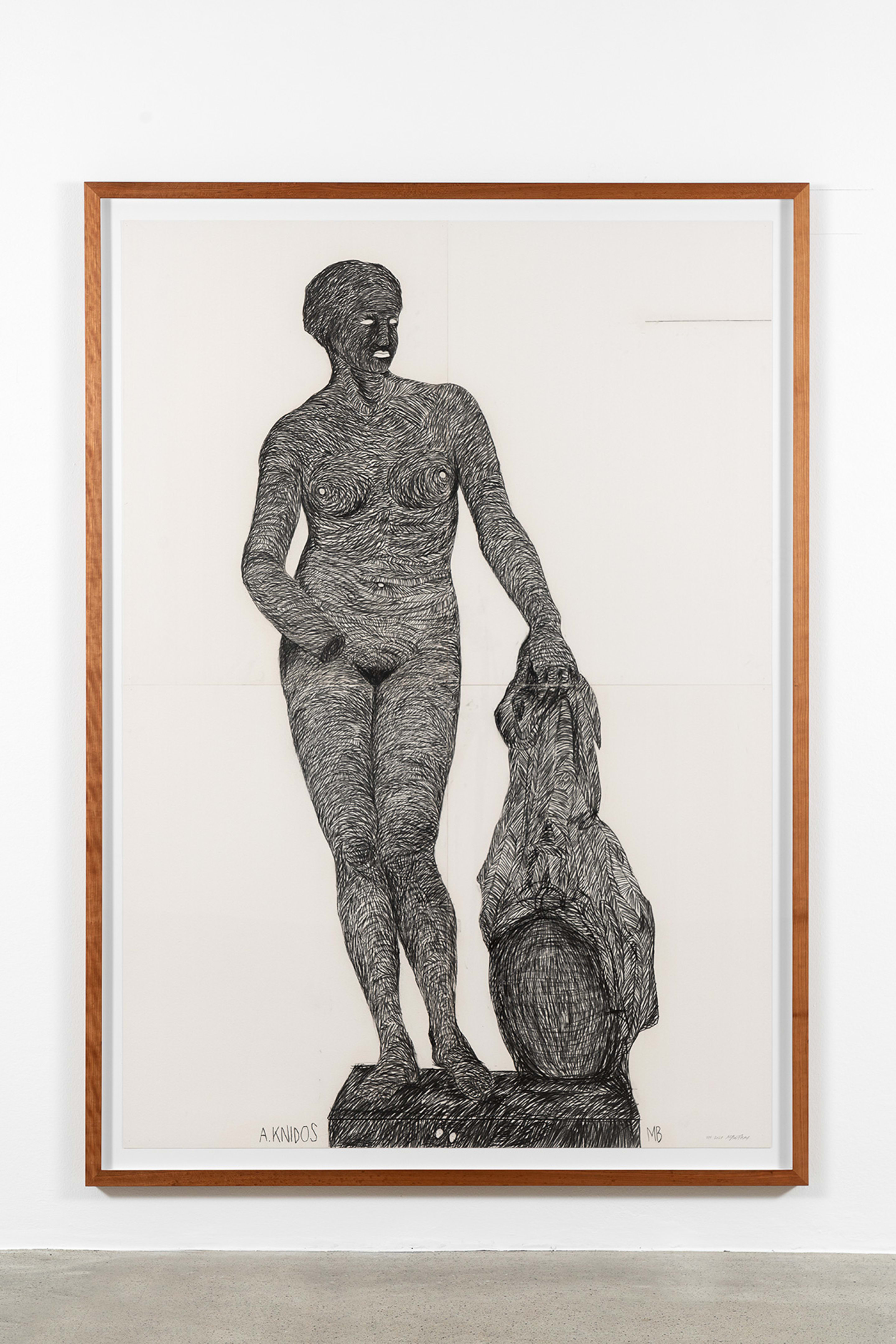

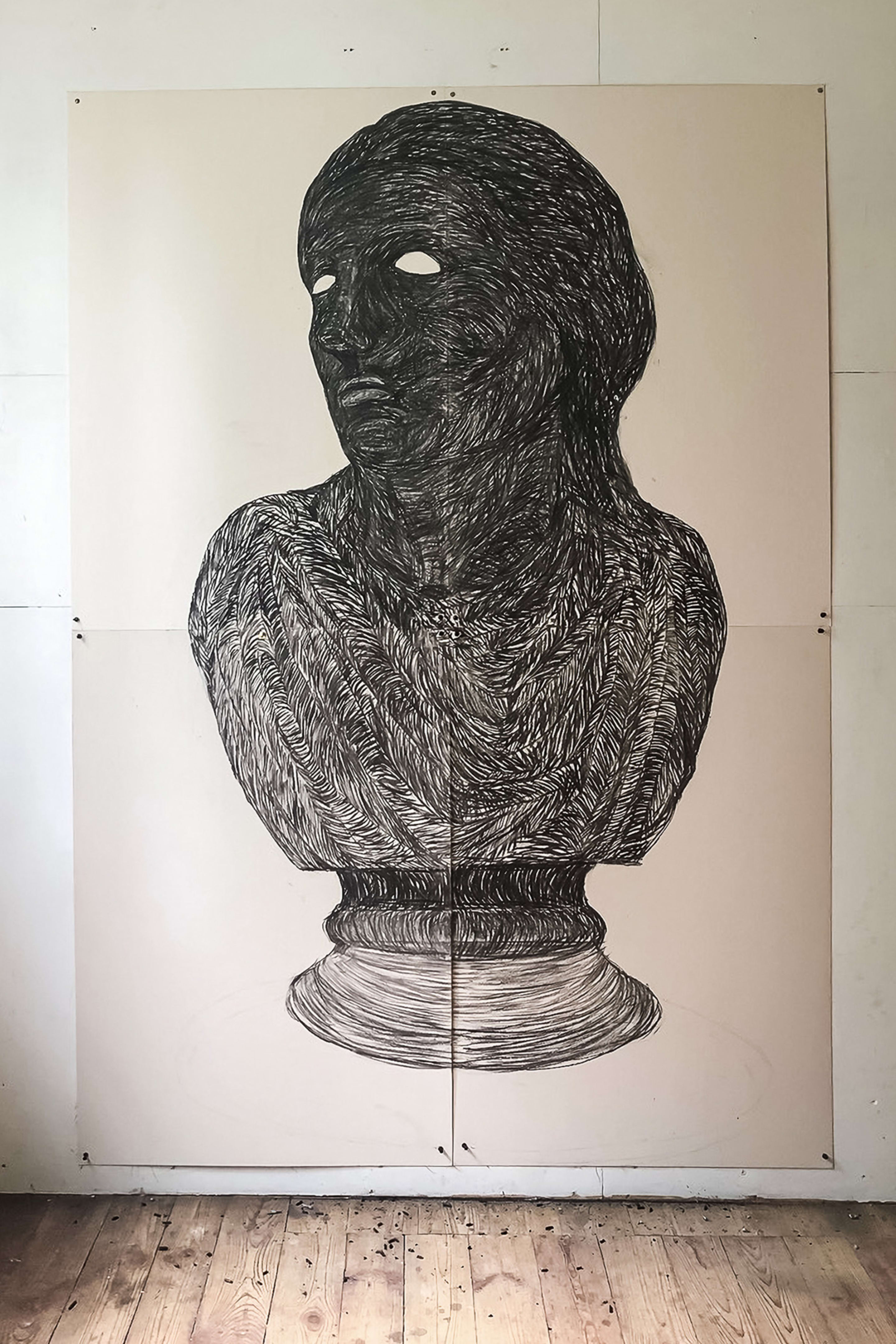
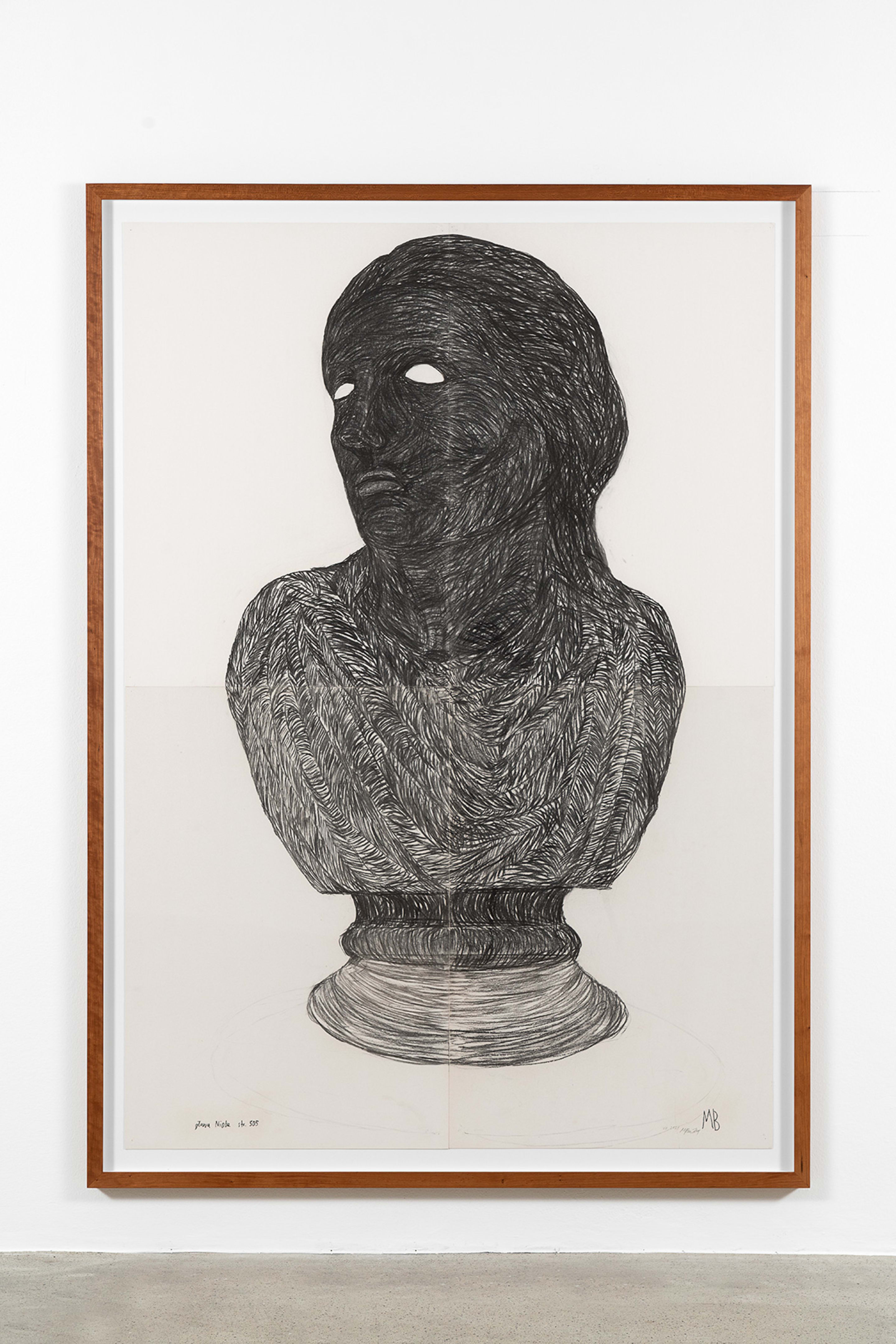
The title is the frame, which helps to organize thoughts. What is important for me is that the frame is open for any kind of interpretation, even far away from my ideas. That’s the life of the exhibition. The myths I share here in Milan are very rooted in the Greek mythology. They are connected to Afrodite, Uranos, Niobe, Danae.
Il titolo della mostra ha funzione di cornice, che mi aiuta a organizzare i pensieri. L’importante per me è che la cornice sia aperta a qualsiasi tipo di interpretazione, anche quella che più di discosta dalle mie idee. Questa è la vita della mostra. I miti che condivido qui a Milano sono profondamente radicati nella mitologia greca e sono collegati con Afrodite, Urano, Niobe e Diana.
–Miroslaw Balka in conversation with Francesca Interlenghi, published on Il Giornale dell'Arte, September 21, 2022
In Hesiod's Theogony, Aphrodite is born off the coast of Cythera from the foam produced by Uranus's genitals, which his son Cronus had severed and thrown into the sea. The sculpture 123 x 72 x 40 / Uranos refers to this myth and represents the origin of the exhibition nehtyM.
Nella Teogonia di Esiodo, Afrodite nasce al largo di Citera dalla schiuma prodotta dai genitali di Urano che suo figlio Crono aveva reciso e gettato in mare. La scultura 123 x 72 x 40 / Uranos, riferendosi al mito di Esiodo, rappresenta quindi l’origine della mostra nehtyM.
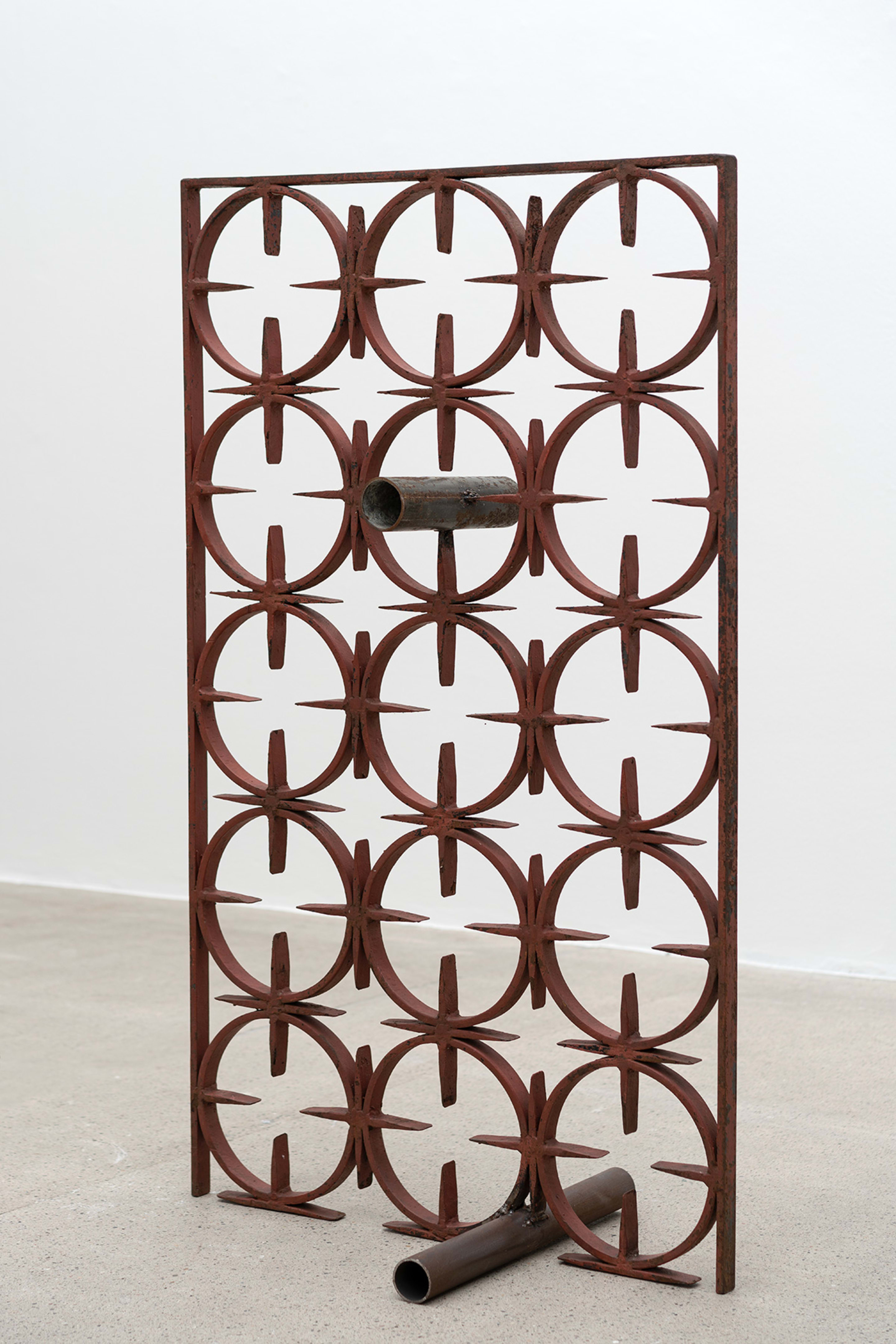
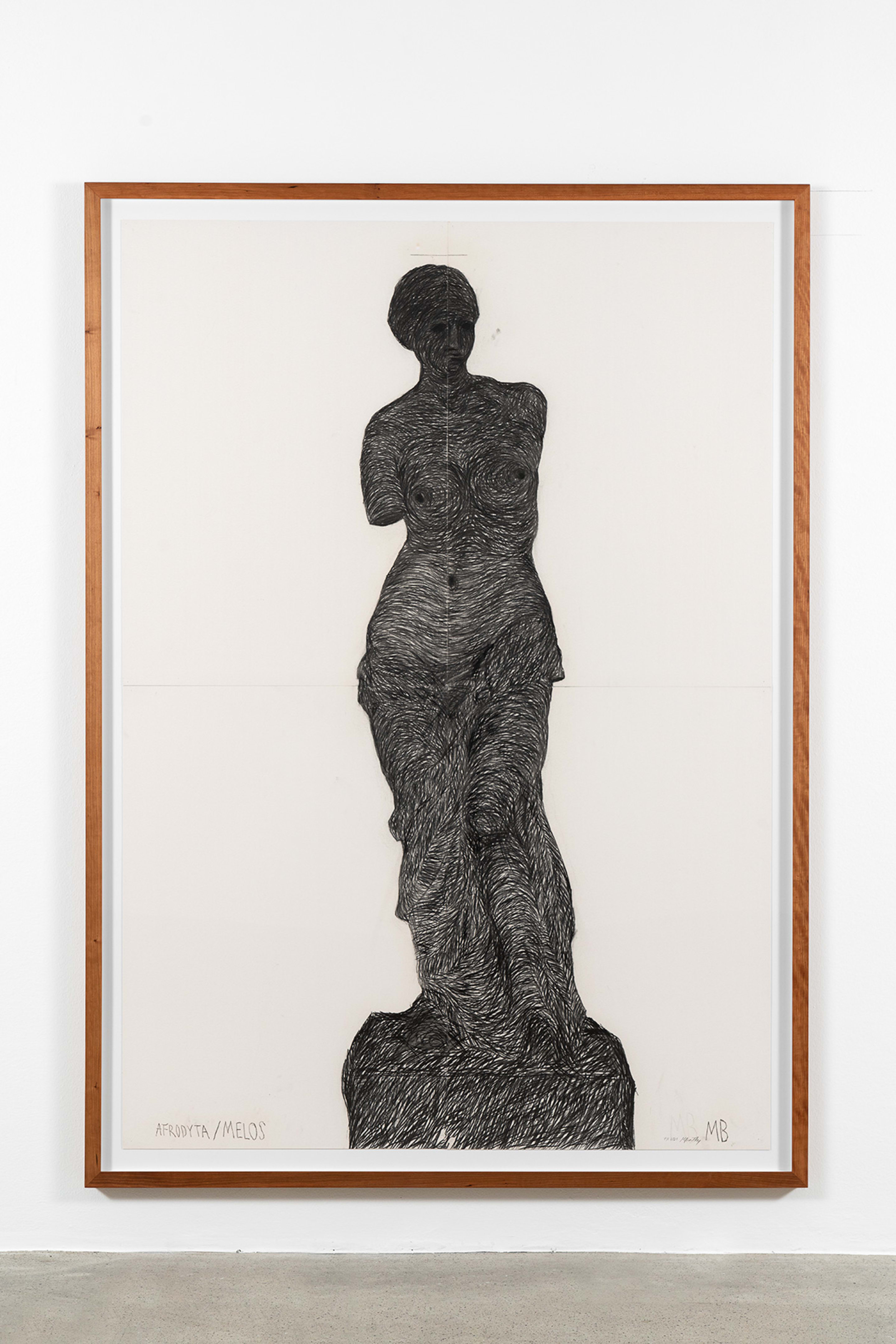
I divided the exhibition into different areas and this helps me to understand its body. The body of the exhibition. As humans we are represented by our bodies as well, and our bodies are fields of desires. We cannot avoid our sexuality. In Poland, at the time when I grew up, the sexuality of the body was the taboo subject and if something is forbidden you put more attention to it. My Afroditas are Big and Black. However I am not Pygmalion.
Ho suddiviso la mostra in tre aree diverse e questo mi ha aiutato a capirne il corpo: il corpo della mostra. Come esseri umani, siamo rappresentati anche dai nostri corpi e i nostri corpi sono luoghi del desiderio. Non possiamo evitare la nostra sessualità. In Polonia, ai tempi in cui sono cresciuto, la sessualità del corpo era un argomento tabù. E naturalmente, se qualcosa è proibito suscita in noi maggiore attenzione. Le mie Afroditi sono Grandi e Nere, tuttavia io non sono Pigmalione.
–Miroslaw Balka in conversation with Francesca Interlenghi, published on Il Giornale dell'Arte, September 21, 2022
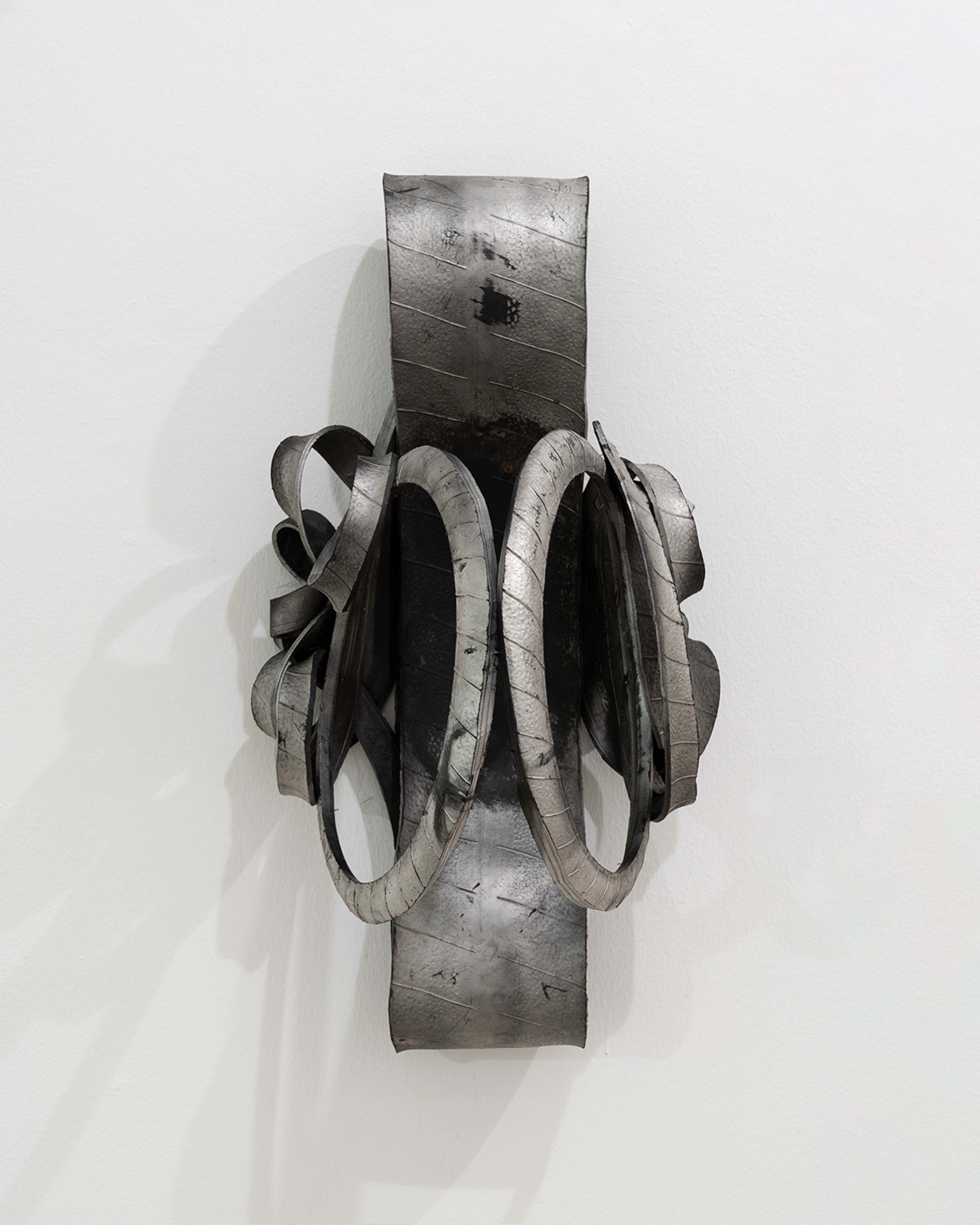
The show continues unveiling the second zone of Gravity, characterized by a concrete sculpture titled 85 kg that powers its own presence in the space with different shapes of concrete-cast flower pots. A multilayered work that was developed through different forms and intensities even if the only information we’ve been given here is the weight. The visible becomes invisible and vice versa, the measurement of the sculpture’s title alludes to the totality of the final object, underlining its heavy presence in the space and at the same time its absence in an imaginary eternal heaven. The number of concrete elements, each complete with an indication of their individual weight, is twenty-six, the same number of letters in the alphabet.
Segue Gravità che vede come protagonista 85 kg, una scultura in cemento composta da forme differenti di vasi da fiori. Dell’opera, che è stata sviluppato attraverso strutture, livelli e intensità diversi, l’unica informazione dataci è il peso: mentre la misura del titolo suggerisce la totalità dell’oggetto finale e ne demarca la presenza nello spazio, i dettagli sono taciuti. Nella compresenza di visibile, quantificabile, e invisibile, latente, l’opera evoca un immaginario senza tempo. I diversi elementi in cemento, ciascuno corredato dall’indicazione del suo peso, sono ventisei come le ventisei lettere dell’alfabeto.
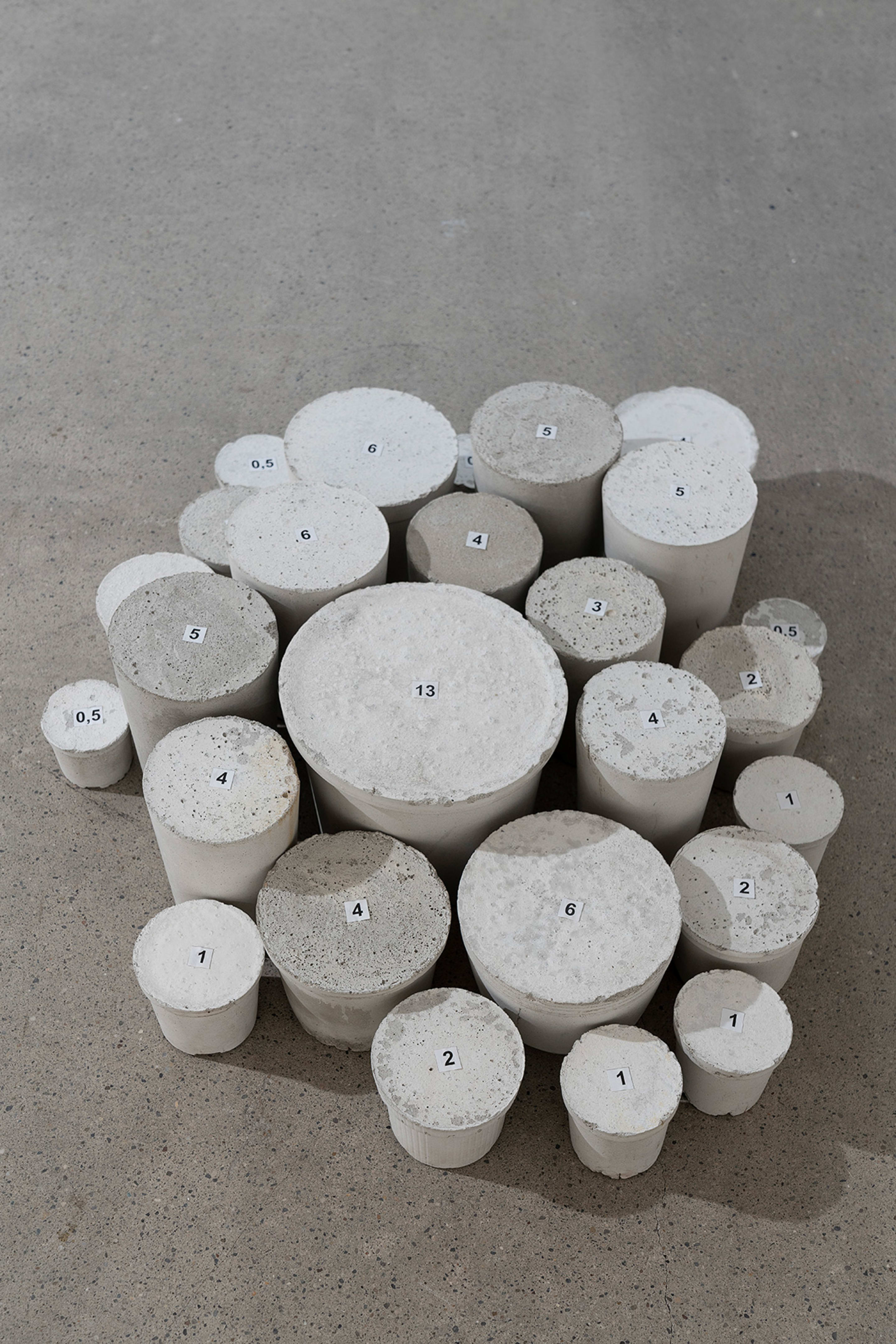
Balka leads us by activating a series of shifts and passages to the last area of the show, Togetherness, represented by 237 x 23 x 23 / NowHereWe, a sculpture composed of various bells, all of which are sourced from different cultures and religious iconography. Retrieving found objects, repeatedly interwoven in itself, but always changing in its history and interpretation, the artist suggests different connotations, infusing each material used with a new meaning by their removal of their original context and drawing our attention to the formal language, the relationship with the space and whispering a new message free of any explicit interpretation.
Unione è la terza area della mostra con 273 x 23 x 23 / NowHereWe, una scultura composta da campane provenienti da luoghi, culture e iconografie religiose diverse. Attraverso l’associazione di oggetti comuni trovati, raccolti e rimossi dal loro contesto originario, Miroslaw Balka avvicina storie e memorie lontane mettendole in relazione con uno spazio inedito, quello espositivo, e sviluppa un nuovo linguaggio formale il cui significato è libero da ogni esplicita interpretazione.
Miroslaw Balka ends the journey with a fragment from his private sphere represented by the work Heaven / Jerzy, a golden foil paper that he used to wrap the last Christmas present for his father, bearing witness to an intimate time long gone. It’s a new narration of a space suspended between the time lost and the time evoked through memory, in which Balka invites us to linger on the myth of a family home, the myth of childhood and the collective myth of the human condition.
L’artista conclude il percorso con un frammento della sua sfera privata, rappresentato dall’opera Heaven / Jerzy, una carta da regalo dorata che rievoca un ricordo ormai distante: l’ultimo Natale trascorso con suo padre. Sospesa tra il tempo perduto e quello ritrovato, questa narrazione che Balka costruisce a partire da una memoria personale allude al mito collettivo della dimora famigliare, dell’infanzia e della condizione umana.
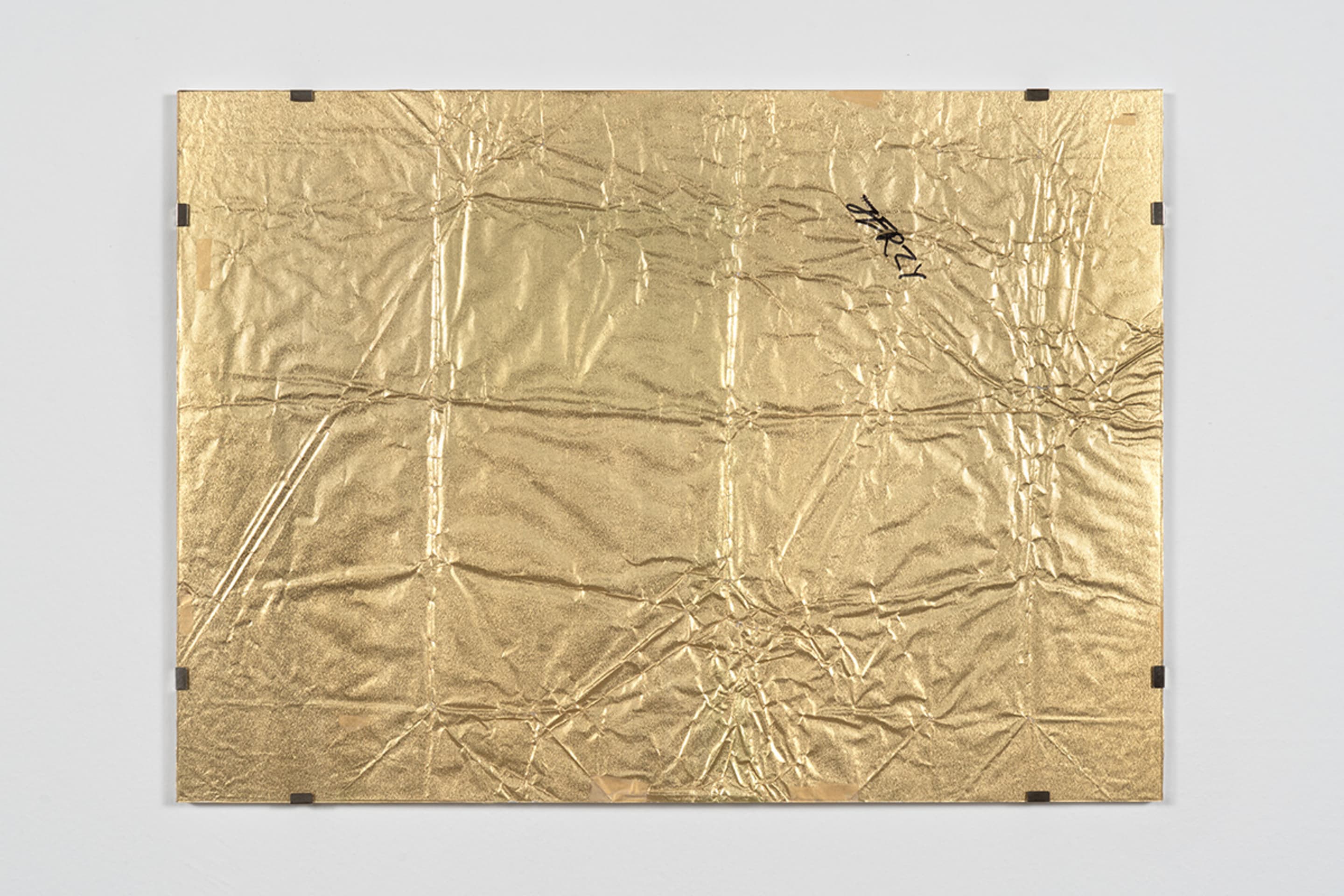
“Where are the borders of trust? You wouldn’t touch a painting with your fingers, but sculpture makes you want to touch it, to knock on it to understand what it is made of. The presence of the body, the role of physicality — it’s a different context, in which there are still perspectives for sculpture no longer figurative but dedicated to a different figure — the figure of the viewer.”
“Dove sono i confini della fiducia? Non toccheresti un quadro con le dita, ma la scultura fa venire voglia di toccarla, di bussare per capire di cosa è fatta. La presenza del corpo, il ruolo della fisicità – è un contesto diverso, in cui ci sono ancora prospettive per la scultura non più figurativa ma dedicata a una figura diversa – la figura dello spettatore.”
–Miroslaw Balka
Alongside the works on view in the exhibition nehtyM we are pleased to share a selection of Balka's recent works. The materials employed his sculptural practice are simple, everyday objects and things, often powerfully resonant of rituals and hidden memories.
Oltre alle opere in mostra abbiamo il piacere di presentare per l’occasione una selezione di recenti opere inedite di Miroslaw Balka. I materiali impiegati nella sua pratica scultorea sono oggetti semplici, elementi ritrovati e di uso quotidiano, materiali da riciclo, spesso fortemente risonanti di rituali, ricordi e rimandi nascosti.
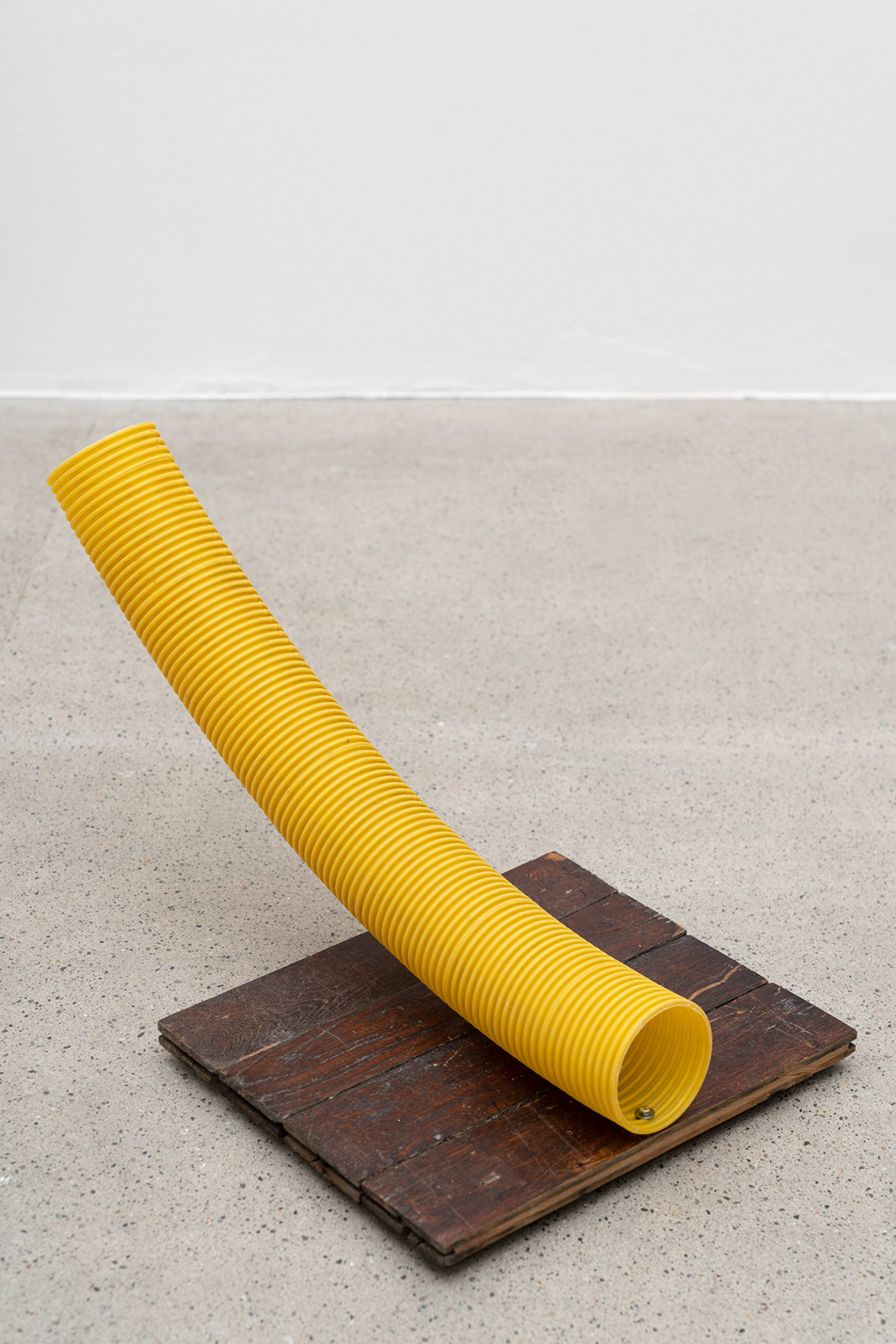

Although he is chiefly known as a sculptor, Miroslaw Balka's drawing practice has accompanied the artist's three-dimensional production throughout his career. In the recent ink on paper works shown below, the universal experiences of nature, pain, and indecision are mapped out on the small sheets which also visualize Catholic narratives: the Virgin Mary feeding the Holy Trinity, roads taking to Heaven and Hell, and Pontius Pilatus.
Sebbene Miroslaw Balka sia noto principalmente per la sua pratica scultorea, anche nel disegno ha ritrovato una pratica che ha da sempre rivestito un ruolo importante, in stretta relazione con le sue produzioni tridimensionali e installazioni scultoree. Nelle recenti opere ad inchiostro su carta, l’universo della natura e i sentimenti tipici dell’essere umano quali il dolore e l’indecisione vengono raffigurati dalla mano dell’artista su piccoli fogli con chiari riferimenti al cattolicesimo: la Vergine Maria che nutre la Santissima Trinità, le strade che portano al paradiso e all'inferno e Ponzio Pilato.


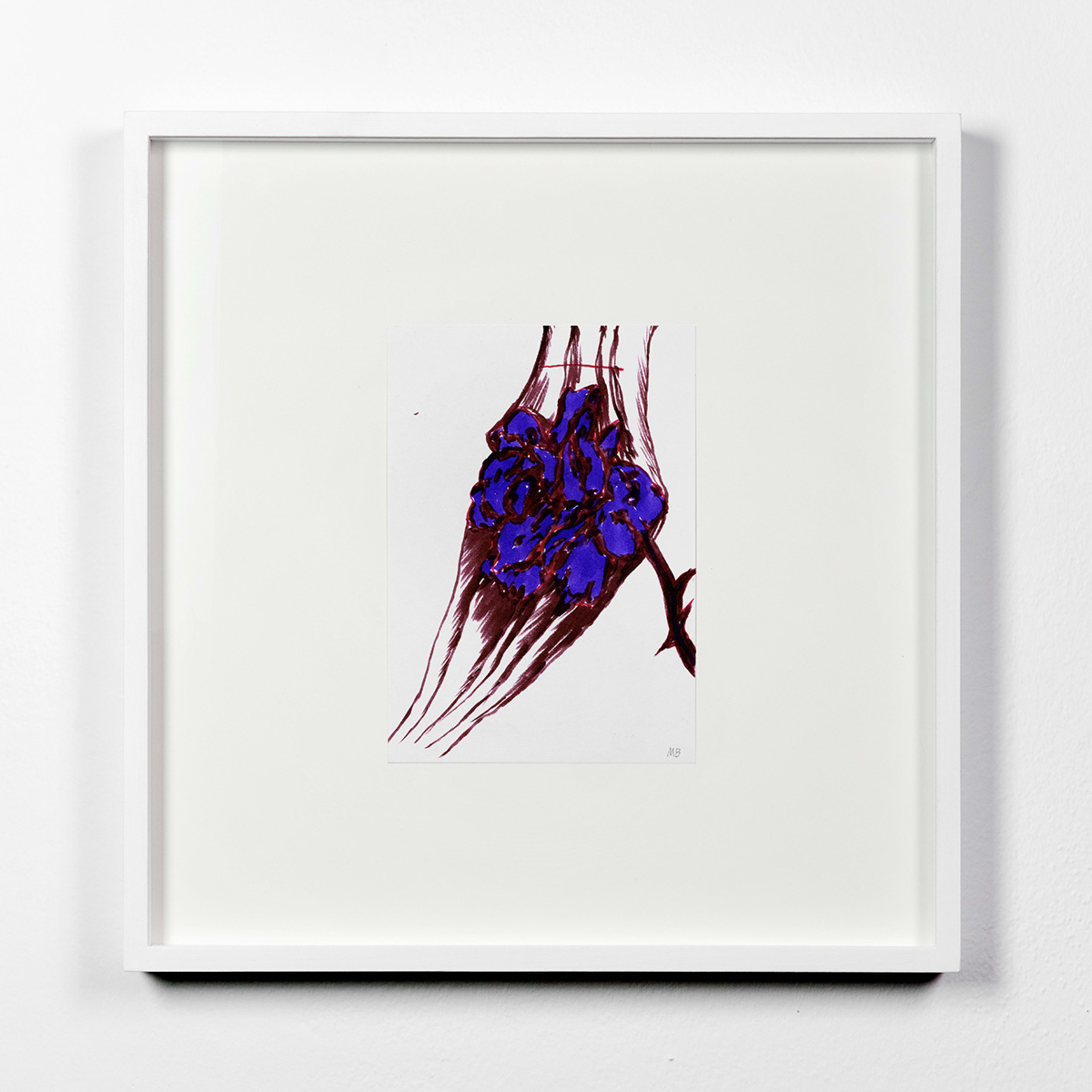
A notable characteristic of Balka's drawings is the fact that the artist continued to draw the figure even after he completely removed representations of the human body in his three-dimensional work in 1989. From then on, the figure is alluded to only in abstract form in his sculptures, but it continues to appear in his works on paper. As he admits, "the drawings represent what I am thinking, not what I am doing."
Una caratteristica notevole dei disegni di Balka è il fatto che l'artista ha continuato a disegnare la figura anche dopo aver rimosso completamente le rappresentazioni del corpo umano nel suo lavoro tridimensionale nel 1989. Da quel momento in poi, la figura è citata solo in forma astratta in sue sculture, ma continua ad apparire nelle sue opere su carta. Come ammette, "i disegni rappresentano ciò che sto pensando, non ciò che sto facendo".
Allegra Pesenti, in 'Miroslaw Balka: Nerve. Construction', exhibition catalogue, Muzeum Sztuki w Łodzi, 2017.
